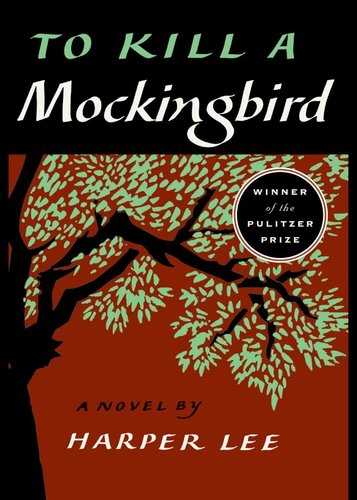
Harper Lee’s renowned novel delves into themes of morality, justice, and societal struggles in the deep South. Through its rich characters and compelling narrative, it highlights the complexities of human nature and the impact of prejudice on communities. Whether you’re preparing for an assessment or simply looking to deepen your understanding, exploring key topics and pivotal moments in the story can significantly enhance your grasp of its deeper meanings.
In this guide, we will explore essential elements of the plot, character analysis, and thematic exploration that are central to the narrative. Focusing on pivotal moments and critical discussions will help clarify the messages the author conveys while offering valuable insights for anyone looking to engage with the text more thoroughly. By examining different perspectives on the story’s major events, you’ll be equipped with the knowledge needed to approach related tasks with confidence.
Prepare yourself by exploring character motivations, pivotal plot twists, and overarching themes that provide the foundation of this powerful work. Whether you’re answering insightful reflections or analyzing the story’s key conflicts, the following breakdown will guide your study in a comprehensive and thoughtful manner.
Key Themes in To Kill a Mockingbird
Harper Lee’s novel is rich with profound themes that reflect on humanity, ethics, and societal challenges. These themes are skillfully woven throughout the narrative, shaping the experiences of the characters and influencing the course of events. By understanding the central ideas, readers can gain a deeper appreciation for the story’s message and its relevance to both its historical context and modern times.
- Injustice and the Legal System: A central theme in the story is the portrayal of an unjust legal system. The novel explores how prejudice and bias can cloud the pursuit of fairness, especially when those in power are blinded by racial and social inequalities.
- Prejudice and Discrimination: Throughout the plot, characters struggle with the consequences of racial and social prejudice. The novel critiques how individuals and groups are marginalized based on their race, class, and personal circumstances.
- Moral Growth and Integrity: The characters undergo significant moral development, particularly Scout and her father, Atticus. The journey of personal growth highlights the importance of doing what is right, even in the face of adversity.
- The Loss of Innocence: As the story unfolds, the younger characters, especially Scout, are exposed to the harsh realities of the world around them. This loss of innocence is a recurring theme, illustrating how experience shapes their understanding of justice, humanity, and morality.
- Empathy and Understanding: One of the novel’s core lessons is the importance of empathy. Characters are encouraged to see the world from others’ perspectives, which is key to fostering compassion and breaking down societal divisions.
Each of these themes plays a vital role in shaping the narrative and contributing to the novel’s enduring impact. The story not only critiques societal issues but also encourages readers to reflect on their own beliefs, values, and actions in the face of injustice and inequality.
Understanding Character Development in the Novel
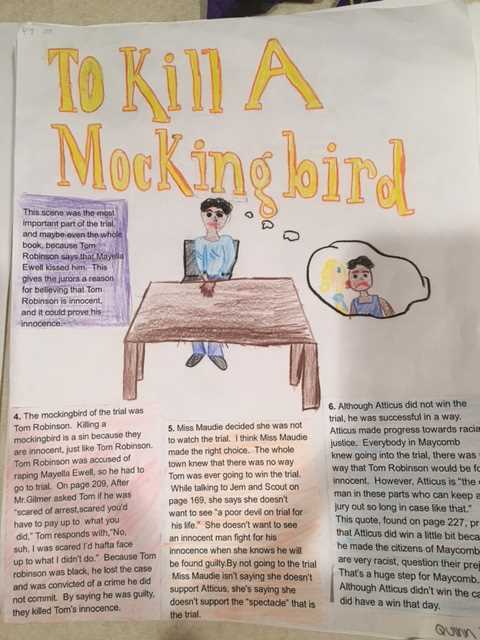
The transformation of characters in Harper Lee’s novel is central to the story’s emotional depth and thematic exploration. As the narrative unfolds, the characters evolve, revealing the complexities of their personalities, beliefs, and moral struggles. This development allows readers to witness how personal experiences and societal challenges shape individuals over time.
- Scout Finch: The protagonist’s journey is one of maturation. Initially, Scout is innocent and unaware of the harsh realities of the world. Over time, she begins to understand the prejudices and injustices that surround her, gaining insight into human nature and moral integrity.
- Atticus Finch: Atticus serves as a moral compass throughout the story. While his beliefs in justice and equality are steadfast, his character also demonstrates the challenges of maintaining these ideals in a society rife with prejudice. His calm demeanor and unwavering sense of duty guide his children as they navigate a complex world.
- Jem Finch: Jem’s transformation is marked by a growing awareness of the world’s flaws. As he matures, he grapples with the ideals of fairness and the realization that the world is not always just. His character arc represents the loss of innocence and the confrontation with uncomfortable truths.
- Boo Radley: Although he is a largely silent figure in the story, Boo’s development is symbolized through the changes in the way the children perceive him. From a mysterious and frightening figure to a symbol of kindness and understanding, Boo’s transformation represents the theme of empathy and the importance of looking beyond surface appearances.
- Mayella Ewell: Mayella’s character development is less explicit but still significant. Her actions are shaped by the oppressive social structure she inhabits, and her choices reflect the limited options available to her as a marginalized individual in a racially divided society.
The evolving nature of these characters highlights the central themes of the novel, from moral integrity to the struggle for justice. By examining their development, readers gain a deeper understanding of the story’s critique of societal values and the complexities of human behavior.
Important Quotes and Their Meanings
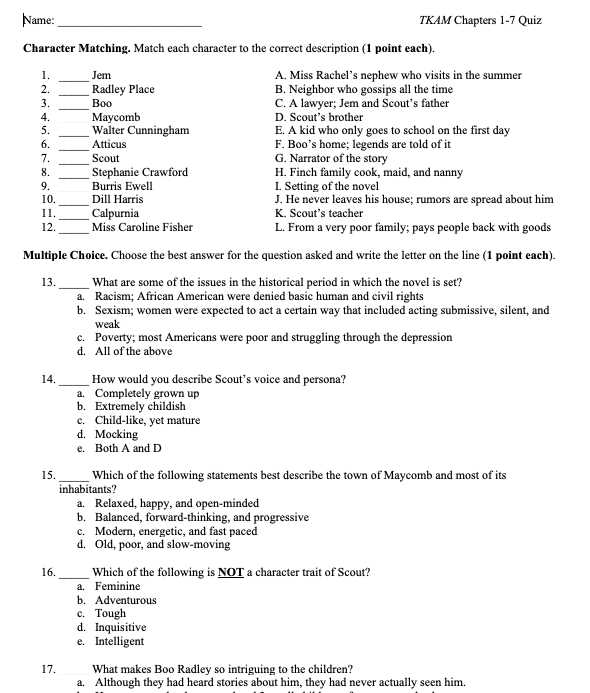
Throughout the novel, certain lines of dialogue resonate deeply, reflecting the core themes of justice, morality, and human nature. These memorable quotes encapsulate the novel’s messages and provide insight into the characters’ experiences and struggles. By examining these statements, readers can better understand the motivations behind key moments in the story and the larger societal issues it addresses.
Quote Analysis
The following table highlights several key quotes from the story, along with their significance to the plot and the characters’ development:
| Quote | Meaning |
|---|---|
| “You never really understand a person until you consider things from his point of view.” | This line, spoken by Atticus, encourages empathy and the idea of seeing the world from another person’s perspective. It reflects one of the novel’s central themes–understanding and compassion in a divided society. |
| “It’s never an insult to be called what somebody thinks is a bad name. It just shows you how poor that person is, it doesn’t hurt you.” | Here, Atticus teaches Scout about resilience and the value of not allowing others’ opinions to define one’s self-worth. It emphasizes the importance of inner strength over external judgment. |
| “Mockingbirds don’t do one thing but make music for us to enjoy. They don’t eat up people’s gardens, don’t nest in corncribs, they don’t do one thing but sing their hearts out for us.” | This metaphorical statement underscores the idea of innocence and purity. The mockingbird symbolizes those who are harmless and contribute positively to the world, yet are often unfairly persecuted, much like Tom Robinson in the novel. |
| “I wanted you to see what real courage is, instead of getting the idea that courage is a man with a gun in his hand. It’s when you know you’re licked before you begin, but you begin anyway and see it through no matter what.” | Atticus imparts a profound lesson about true courage, highlighting moral fortitude and the strength to fight for what is right, even when the odds are stacked against you. This moment reinforces the novel’s focus on integrity and honor. |
Conclusion
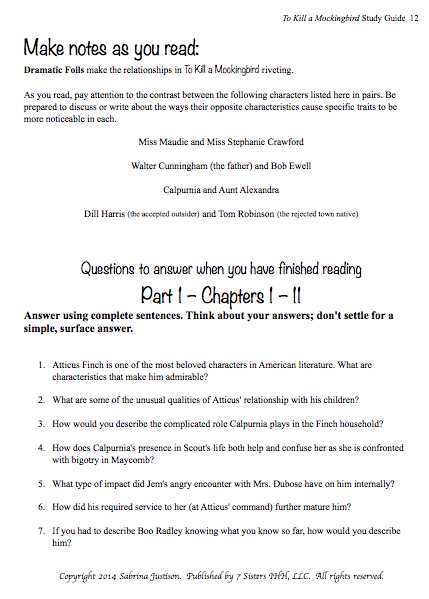
Each of these quotes reflects the moral dilemmas faced by the characters and offers valuable lessons for readers. The wisdom contained in these words serves as a guide to understanding the complexities of the novel’s themes and the human condition it portrays. By reflecting on these significant lines, we can gain a deeper appreciation for the novel’s exploration of justice, morality, and compassion.
The Role of Justice in the Story
In Harper Lee’s novel, the concept of justice is examined from multiple angles, revealing the complexities of fairness and morality in a deeply divided society. The pursuit of justice is a central theme, portrayed through both the legal system and the personal actions of the characters. Throughout the narrative, the characters face difficult choices that force them to question what true justice means, particularly in a society where inequality often dictates the outcomes.
Justice and the Legal System

The legal system is depicted as both a source of hope and a tool of oppression. The trial of Tom Robinson serves as the primary example of how justice can be skewed by prejudice, revealing the flaws within an otherwise structured legal system.
- Tom Robinson’s Trial: The trial is a stark illustration of racial injustice, as an innocent man is wrongfully accused due to racial bias, despite clear evidence in his favor. This event exposes the failure of the justice system to protect the rights of marginalized individuals.
- Atticus Finch’s Role: Atticus represents the ideal of justice, striving to uphold the law and defend those who cannot defend themselves. His actions during the trial reflect his commitment to fairness, even when the societal norms are stacked against him.
- The Verdict: The guilty verdict, despite the overwhelming evidence of Tom’s innocence, reveals the deep-rooted racial prejudices that influence the legal system and demonstrate the difficulty of achieving true justice in such a society.
Personal Justice and Morality
Justice in the story is also explored on a more personal level, as characters wrestle with their own moral compasses. Atticus Finch’s sense of justice extends beyond the courtroom and into his everyday actions, guiding him in raising his children with strong ethical values.
- Atticus as a Moral Leader: Atticus embodies personal integrity, showing that justice is not only about legal procedures but also about doing what is right, regardless of the consequences. His decisions teach Scout and Jem to act with honor and empathy.
- Scout’s Learning: As the novel progresses, Scout learns that justice involves not only legal fairness but also empathy and understanding. Her experiences with people like Boo Radley and Tom Robinson help her to see the world from different perspectives.
- The Impact of Injustice on Society: The novel suggests that the failure to achieve true justice creates societal harm, fostering mistrust and division. The injustice faced by Tom Robinson affects not just the individuals involved, but the entire community.
Justice, both within the legal system and on a personal level, is a fundamental theme that drives much of the conflict in the story. It is ultimately shown that achieving true fairness requires more than just following the law–it requires empathy, courage, and a willingness to confront deeply ingrained prejudices.
Symbolism of the Mockingbird
In Harper Lee’s novel, certain symbols carry significant meaning, shedding light on the deeper themes of innocence, harm, and societal judgment. One of the most poignant symbols in the story is the bird that represents purity and kindness, yet is vulnerable to injustice. This symbol serves as a reminder of the harm caused when innocent individuals are persecuted without reason.
The Innocent and Harmless
The bird is a metaphor for those who do no harm to others but are still subjected to prejudice and unfair treatment. In the novel, this symbolism is reflected in key characters whose innocence is damaged by society’s flawed perceptions.
- Tom Robinson: Tom represents the pure, innocent figure who is wrongfully accused and ultimately destroyed by the societal prejudice he faces. His character is a direct embodiment of the symbolism behind the bird, as he causes no harm but is persecuted.
- Boo Radley: Though not directly involved in the trial, Boo is another figure symbolizing innocence. His kind acts are misunderstood by the community, and he is unfairly judged as a threat, much like the bird that is often wrongly harmed.
Innocence as a Vulnerability
The bird also symbolizes how innocence can become a vulnerability in a world dominated by bias and fear. The novel emphasizes that those who are pure and harmless are often at risk of being targeted by societal forces beyond their control.
- Racial Injustice: The persecution of Tom Robinson illustrates how societal systems, tainted by racial prejudice, harm those who are innocent. The bird’s fate parallels the tragic outcomes that result from such unjust treatment.
- Misunderstanding and Fear: Boo Radley’s portrayal as a mysterious figure further emphasizes how fear and misunderstanding can distort perception, turning an innocent person into a scapegoat.
The symbolism of the bird serves as a powerful reminder of the novel’s core message: the innocence of those who do no harm should be protected, and the dangers of unjust treatment must be confronted in society. It challenges readers to reflect on how their perceptions and actions affect the most vulnerable individuals in their communities.
Key Plot Points and Analysis
The story unfolds through a series of significant events that shape the lives of its characters and expose the deep-rooted issues of racial and moral inequality in society. These pivotal moments highlight the personal and societal struggles that define the narrative. By analyzing these events, readers can better understand the themes of justice, innocence, and the complexities of human nature that drive the plot forward.
The following table breaks down key events in the narrative, along with an analysis of their importance to the overall themes of the story:
| Plot Point | Analysis |
|---|---|
| Atticus Finch Takes the Case | Atticus’s decision to defend Tom Robinson sets the stage for the novel’s exploration of racial injustice. It reveals his unwavering belief in fairness and equality, despite knowing the challenges he will face in a prejudiced community. |
| Tom Robinson’s Trial | The trial is the central event of the story, highlighting the deep racial divides in the society. Despite clear evidence of Tom’s innocence, the verdict reveals the pervasiveness of racial bias, underscoring the theme of systemic injustice. |
| The Verdict and Its Aftermath | The guilty verdict handed to Tom Robinson, despite his innocence, serves as a critique of the failings in the legal system. This moment exposes the societal norms that prevent true justice from being served. |
| Jem’s Loss of Innocence | Jem’s reaction to the trial’s outcome marks his transition from childhood to a more complex understanding of the world. His loss of innocence is emblematic of the novel’s exploration of growing up amidst injustice. |
| Boo Radley’s Intervention | Boo Radley’s eventual emergence as a protector of Scout and Jem provides a powerful conclusion to the theme of misunderstood innocence. His quiet actions in saving the children underscore the message of compassion and the need to look beyond societal labels. |
Each of these events serves as a touchstone for exploring the moral, social, and emotional issues at the heart of the narrative. By analyzing these key moments, the novel encourages readers to confront the harsh realities of prejudice, the search for justice, and the importance of empathy in the face of adversity.
The Significance of Mayella Ewell

Mayella Ewell is a pivotal character in Harper Lee’s novel, representing the complexities of societal class, race, and individual moral conflict. Her role in the narrative highlights the themes of power, vulnerability, and the consequences of living in a deeply divided community. As the daughter of a notorious and abusive father, Mayella is caught between her own desires and the social structures that confine her. Her actions, though rooted in fear and desperation, set off a chain of events that expose the fragile nature of justice in the community.
Mayella’s Struggle with Power and Fear
Mayella’s character embodies the struggle between power and powerlessness. Although she belongs to one of the most marginalized families in the community, her testimony in court gives her a temporary sense of control. Yet, her position is fragile, as her accusation of Tom Robinson reflects the harsh reality of her vulnerability in a racially divided society.
- Her Relationship with Her Father: Mayella’s life is shaped by the oppressive and abusive behavior of her father, Bob Ewell. She is often depicted as trying to escape his control, but her actions are dictated by his expectations and the social pressures around her.
- Her Interaction with Tom Robinson: Mayella’s interaction with Tom Robinson reveals her deep loneliness and yearning for affection, which she mistakenly tries to fulfill by reaching out to him. Her actions, while human, lead to tragic consequences when they are misinterpreted in the context of racial prejudice.
The Tragic Consequences of Her Actions
Mayella’s decision to accuse Tom Robinson of a crime he did not commit stems from her fear of her father’s wrath and the pressure to maintain her family’s reputation in a racist society. Her role as a catalyst for the trial exposes the moral compromises she makes, even though her actions are driven by a mixture of fear, guilt, and helplessness.
- The Impact of Her Testimony: Mayella’s testimony in court, despite its falsity, holds weight in the eyes of the jury, reflecting the racial prejudices that shape the legal system. Her accusation of Tom leads to his wrongful conviction, illustrating how the voices of the vulnerable are often ignored or twisted in the face of systemic bias.
- The Sympathy for Mayella: Despite the harm she causes, there is a sense of pity for Mayella. Her tragic situation is a reminder of how individuals can be trapped by their circumstances, and how even those who perpetuate injustice may themselves be victims of their environment.
Mayella Ewell’s significance lies in the way she serves as a mirror for the novel’s larger themes of racism, social class, and the consequences of prejudice. Her actions, driven by fear and desperation, shed light on the difficult choices faced by individuals in oppressive systems, ultimately contributing to the narrative’s exploration of human complexity and moral ambiguity.
Atticus Finch as a Moral Figure
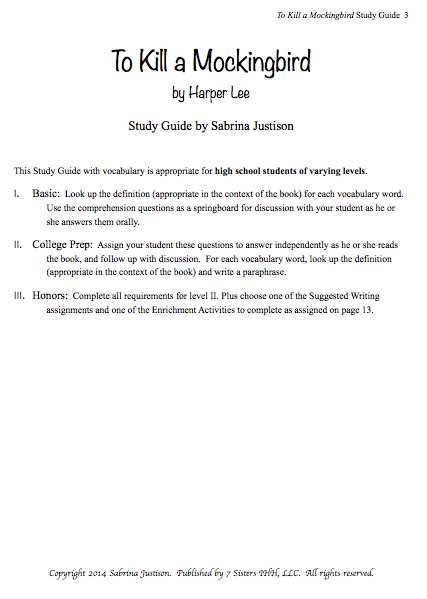
Atticus Finch stands as a beacon of integrity, wisdom, and moral fortitude in a society riddled with prejudice and inequality. Throughout the story, his unwavering commitment to justice, fairness, and doing what is right despite immense personal and societal pressure positions him as a moral compass within the narrative. His actions and choices not only shape the course of the events but also provide a guiding example of how to confront ethical dilemmas with courage and empathy.
Atticus’s role as a moral figure becomes evident through his decisions, particularly in how he handles the trial of Tom Robinson. Despite knowing the challenges and dangers he will face, Atticus takes on the case with the belief that every individual deserves a fair trial, regardless of their race or background. His actions speak to the idea that moral courage is not about winning or losing, but about standing firm in one’s principles, even when it’s the hardest path to take.
Moreover, Atticus’s teachings to his children, Scout and Jem, emphasize the importance of understanding others’ perspectives and the value of empathy. He frequently encourages them to look beyond their own viewpoints and consider the feelings and experiences of others, even when those individuals may not be easy to understand or sympathize with. In this way, Atticus embodies the novel’s larger themes of empathy, justice, and moral responsibility, making him a character whose actions transcend the events of the story and resonate with broader societal concerns.
Scout Finch’s Growth Throughout the Story
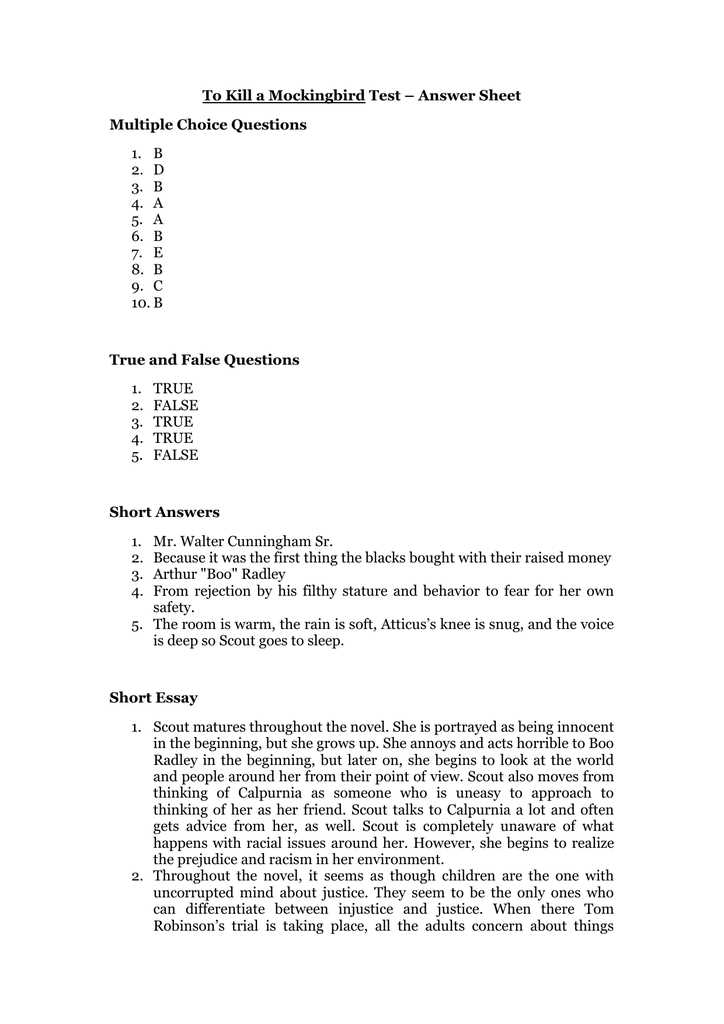
Scout Finch’s journey from innocence to a deeper understanding of the world around her is one of the most compelling aspects of the narrative. As a young child, Scout perceives the world with a mix of curiosity and confusion, often reacting impulsively to the injustices she witnesses. However, as she experiences the events surrounding her father’s work and the dynamics of her community, she begins to evolve into a more empathetic and morally aware individual. Her development is shaped by the lessons imparted by her father, Atticus, as well as the harsh realities of the society in which she lives.
At the start of the story, Scout is a headstrong and outspoken child, quick to fight back when she feels threatened or insulted. However, as the story unfolds, she learns important lessons about courage, empathy, and the complexities of human nature. Some key moments in her growth include:
- Her Understanding of Justice: Through witnessing the trial and its outcome, Scout comes to understand that the legal system does not always deliver fairness. She grapples with the disparity between right and wrong, realizing that justice is often influenced by societal prejudices.
- Her Relationship with Boo Radley: At the beginning of the story, Scout views Boo Radley as a mysterious figure to be feared. By the end, her perception of him changes as she learns to empathize with his situation, realizing that things are not always as they seem.
- Her Growth in Empathy: One of the most important lessons Scout learns is to consider other people’s perspectives. This is especially evident in her interactions with characters like Mayella Ewell and her evolving understanding of the world’s injustices.
As the story progresses, Scout begins to understand the complexities of human behavior and the importance of standing up for what is right, even when it is difficult. This growth marks her transformation from a child who sees the world in black and white to a young person capable of understanding its gray areas. By the end of the novel, Scout embodies the moral lessons she has learned, demonstrating how a child can mature into a thoughtful, compassionate individual when guided by strong ethical principles.
How Racism Influences the Plot
Racism is a central force that drives much of the conflict in the story, shaping the actions and decisions of both the characters and the community. It acts as a pervasive backdrop that influences the lives of those involved, often dictating their opportunities, relationships, and interactions. Through its impact on the trial, the characters’ experiences, and the overall narrative, racism emerges as a powerful force that highlights the stark inequalities of society. The plot is deeply affected by these racial prejudices, underscoring the tension between justice, morality, and societal norms.
The Trial and Its Impact
The trial serves as a critical moment where racial bias directly influences the direction of the story. The accusation against Tom Robinson, a black man, is rooted in racial prejudice, and his eventual conviction reveals the deep-seated racism in the legal system. The fact that a white woman’s word is valued over that of a black man’s is a reflection of the systemic discrimination that shapes the community’s perceptions of justice.
- Injustice in the Courtroom: Despite clear evidence proving Tom Robinson’s innocence, racial prejudices prevail, leading to a guilty verdict. This moment exposes the harsh reality that race determines the outcome of legal battles.
- The Effect on Tom Robinson: Tom’s fate is sealed long before the trial even begins, as his race makes him an easy target for accusation. His story illustrates how racial prejudice shapes the lives of black individuals, regardless of their actions or character.
The Influence on Character Relationships
Racism also affects the relationships between characters in the story, particularly those that cross racial lines. Atticus Finch’s decision to defend Tom Robinson sets him apart from many of his peers, subjecting him and his family to scorn and hostility. His courage in challenging the prevailing racial attitudes forces others to confront their own biases, while simultaneously exposing the dangers of standing against such entrenched beliefs.
- Atticus Finch’s Moral Stance: His defense of Tom Robinson represents a stark contrast to the widespread racial hatred in the town. Atticus’s actions challenge the idea that race should influence an individual’s treatment under the law.
- The Children’s Awakening: Scout and Jem, initially naive to the complexities of racism, begin to understand its depth through their experiences during the trial and the hostility their father faces. This marks their painful yet necessary transition from childhood innocence to a more mature understanding of the world’s inequalities.
Ultimately, racism not only shapes the course of events in the story but also serves as a lens through which the characters’ moral development and the societal structures they inhabit are examined. It reveals the flaws and injustices that persist in the community, making it an essential element in understanding both the plot and the deeper themes of the narrative.
Comparison of Tom Robinson and Boo Radley
Both Tom Robinson and Boo Radley serve as central figures in the narrative, each embodying themes of innocence, misunderstanding, and societal prejudice. While their circumstances are vastly different, they are both subject to judgment based on rumors, fear, and bias, despite their inherent goodness. Their stories reflect the destructive nature of assumptions and stereotypes, highlighting the consequences of ignorance and the loss of empathy within a community.
Tom Robinson is a man falsely accused of a crime he did not commit, and his story is largely shaped by racial prejudice. As an African American man in a deeply segregated society, he faces overwhelming bias from the legal system, the townspeople, and even the jury, all of whom are influenced by their racial prejudices rather than the truth. His trial, conviction, and eventual fate illustrate how society’s treatment of black individuals is based on racial stereotypes rather than the merits of the case at hand.
Boo Radley, on the other hand, is a reclusive figure whose mysterious presence in the neighborhood sparks gossip and fear among the townspeople. Often regarded as an outcast, Boo is the subject of wild rumors, with many of the townsfolk believing him to be dangerous or monstrous. However, as the story unfolds, it becomes clear that Boo is actually a kind-hearted and misunderstood individual who, despite his eccentricities, does nothing but protect and care for those around him, especially Scout and her brother, Jem.
- Misjudgment Based on Fear: Both Tom and Boo are judged by society without ever being truly understood. Tom is condemned for his race, while Boo is condemned for his isolation and the rumors surrounding him.
- Innocence and Misunderstanding: Both characters are innocent in their actions, yet their fates are shaped by others’ misconceptions and prejudices. Tom’s innocence is overshadowed by racial bias, while Boo’s kindness is hidden behind the veil of fear and superstition.
- Heroic Acts in Secret: While Tom Robinson’s story is tragic, Boo Radley quietly becomes a hero through his actions. Boo saves the children from harm, much like a silent protector, revealing the stark contrast between his misunderstood persona and his true character.
In the end, both characters symbolize the theme of unfair judgment and the human tendency to view others through a distorted lens. Their stories serve as powerful reminders of the dangers of prejudice and the importance of empathy and understanding in overcoming fear and misunderstanding.
Social Class and Its Impact on Characters
The novel explores the complex dynamics of social hierarchy and how individuals’ roles within society influence their behavior, relationships, and treatment by others. Social class, with its boundaries and expectations, shapes the actions and perceptions of various characters throughout the story. The way characters are viewed and treated is often determined by their economic status, family background, and racial identity, which creates divisions and conflicts within the community.
The Influence of Wealth and Family Background
Characters in the story are impacted by their social standing in various ways, with some experiencing privilege while others face marginalization. Wealth, family reputation, and even the neighborhood one lives in play a significant role in how others interact with them. This theme is seen through the contrasting lives of characters like the Finch family, who have a certain level of respect in the town, and the Ewell family, who are looked down upon due to their poverty and reputation.
Class Distinctions and Prejudices
The deep divide between social classes also fuels prejudice and biases among the characters. These divides are most evident in the way people from different social backgrounds view each other, and it profoundly affects their treatment and opportunities. Characters like Scout and Jem are introduced to these class differences as they grow, while other characters, such as Mayella Ewell, are confined by the constraints imposed by their lower status.
| Character | Social Class | Impact on Behavior |
|---|---|---|
| Atticus Finch | Middle Class | Respected lawyer, values equality and justice, treats all equally regardless of status. |
| Scout Finch | Middle Class | Curious about the world, learning about class distinctions through her interactions with others. |
| Mayella Ewell | Lower Class | Isolated, often subjected to neglect and prejudice, struggles with the limitations imposed by her status. |
| Boo Radley | Social Outcast | Is misunderstood and excluded from society, viewed through the lens of fear and rumors. |
Throughout the novel, social class does not merely determine one’s financial situation but also influences the way individuals perceive their place in the world. It leads to personal struggles, conflict, and the development of key themes such as morality, justice, and empathy. By examining the impact of class on characters, the story invites readers to reflect on the broader implications of societal divisions and how they shape human behavior.
The Role of Prejudice in the Novel
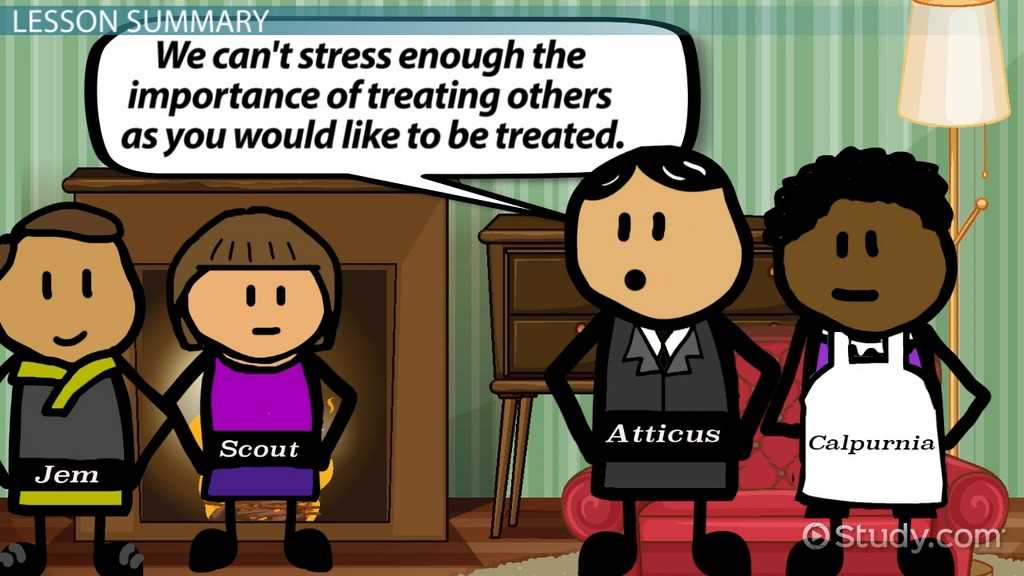
In the narrative, bias and unfounded judgments shape much of the story’s conflict and character development. Prejudice, in various forms, influences how individuals perceive one another, leading to wrongful accusations, discriminatory behavior, and social divisions. Throughout the plot, characters experience both subtle and overt forms of bias, which impact their actions and decisions, often resulting in tragic consequences. This theme underscores the destructive power of stereotyping and intolerance in a divided society.
One of the most glaring examples of prejudice in the novel is the way certain characters are judged based on their race, social status, or background. These biases are often rooted in fear and misinformation, reinforcing societal inequalities. Characters like Tom Robinson and Boo Radley become victims of prejudice, suffering not just because of who they are, but because of how others perceive them through the lens of stereotypes.
As the story unfolds, we see how deeply ingrained prejudices affect not only those who are targeted but also those who uphold such views. For many, prejudice is a learned behavior, shaped by family, community, and societal expectations. However, the novel also shows moments of growth and challenge to these beliefs, particularly through the experiences of Scout and Jem, who begin to see the world from a more empathetic perspective.
In the end, the novel paints a poignant picture of the destructive effects of prejudice, urging readers to consider how deeply embedded biases affect individuals’ lives and communities. The story calls for a reevaluation of moral values and the importance of understanding and empathy in overcoming social divisions.
Understanding the Trial of Tom Robinson
The trial serves as a pivotal moment in the narrative, showcasing the deep divisions within the community and the struggle between justice and prejudice. It is not just a courtroom battle but a reflection of societal values and racial tensions. As the trial unfolds, the events highlight the flaws in the justice system, where a person’s fate is often determined by the biases of the people in power rather than the truth.
The accusations against Tom Robinson are based on deeply ingrained stereotypes and assumptions, leading to a trial that is less about finding the truth and more about reinforcing existing social hierarchies. The proceedings reveal how the legal system can be manipulated by those in power to uphold racist ideologies. Despite the clear evidence of Tom’s innocence, the case becomes an illustration of how prejudice can dictate outcomes and overshadow reason and fairness.
The Role of Atticus Finch
Atticus Finch, as Tom Robinson’s attorney, stands as a symbol of integrity and moral courage throughout the trial. His defense challenges the deeply rooted biases of the town, emphasizing the need for justice over prejudice. Through his unwavering commitment to truth, Atticus exposes the flaws in the case against Tom, yet his efforts highlight the limitations of the legal system in an environment where racism prevails.
The Impact of the Trial on the Community
The trial of Tom Robinson is not just a personal battle but a community event that forces many individuals to confront their own beliefs and biases. For some, it is a moment of awakening, while for others, it reinforces their discriminatory views. The outcome of the trial, though tragic, is a catalyst for growth in characters like Scout and Jem, who begin to understand the complexities of morality, justice, and human nature.
Key Conflicts and Resolutions in the Novel
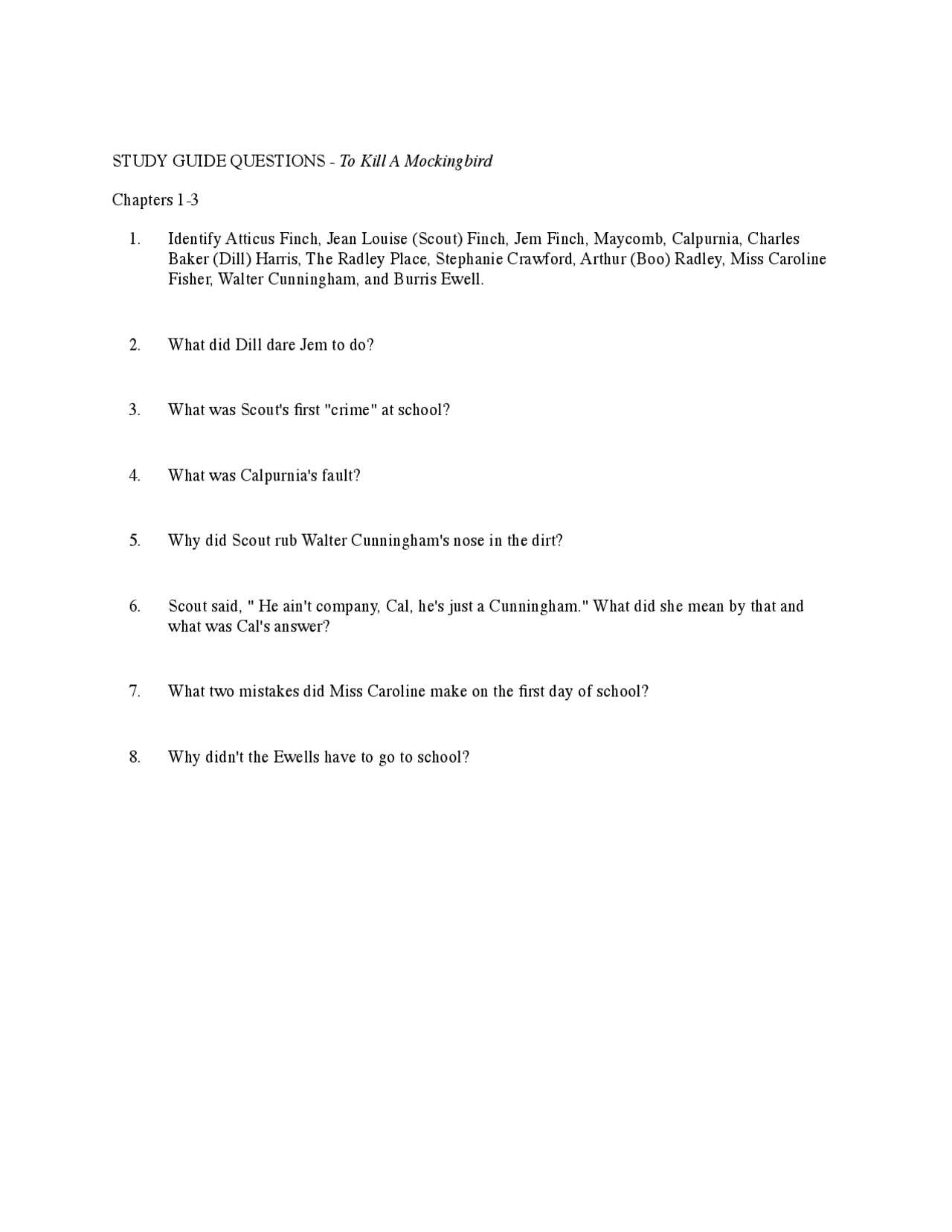
The story presents a number of central struggles that drive the plot, with each conflict offering insights into human nature, societal norms, and individual growth. These conflicts range from personal dilemmas to larger societal issues, each shaped by the complexities of the characters and their environment. As the narrative progresses, the resolutions to these struggles reveal key lessons about morality, empathy, and justice.
At the heart of the story lies the tension between individual values and the prejudices of the larger community. While some conflicts seem to resolve through personal growth or external intervention, others highlight the limitations of individuals when confronted by deeply ingrained social structures. The story’s resolutions often leave readers with lingering questions, encouraging reflection on the real-world implications of these conflicts.
Conflict of Justice vs. Prejudice
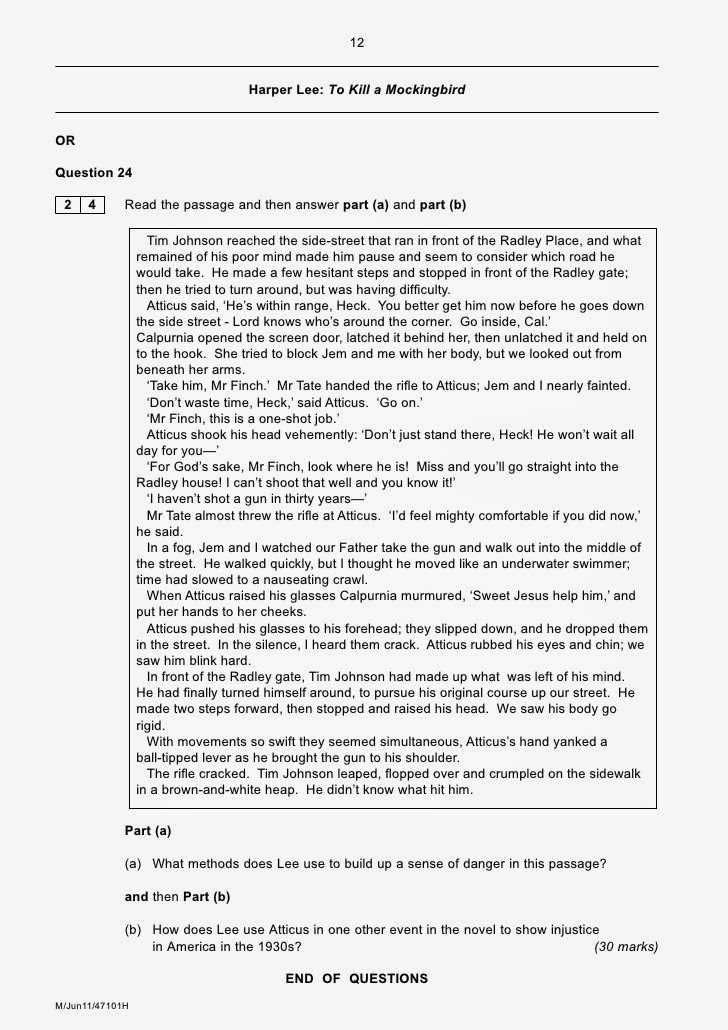
One of the most significant struggles in the story is the clash between the pursuit of justice and the pervasive racial bias that influences the community’s decisions. Despite the compelling evidence proving Tom Robinson’s innocence, the deeply rooted racism within the town prevents the truth from prevailing in court. The resolution of this conflict is bittersweet, as the justice system fails, but the events spark a change in key characters like Atticus, who remains committed to his moral compass, even in the face of societal opposition.
Personal Conflict: Scout’s Maturation
Another prominent conflict involves Scout Finch’s growth and her understanding of the world around her. As she encounters various forms of prejudice and injustice, her experiences challenge her childlike innocence and force her to confront the complexities of human nature. By the end of the story, Scout’s resolution comes through a deeper understanding of empathy and perspective, particularly when she realizes that truly understanding others requires seeing the world through their eyes.
Lessons Learned from To Kill a Mockingbird
The narrative imparts a series of valuable insights that transcend the time and place in which it is set. At its core, the story teaches important lessons about empathy, morality, and the complexities of human nature. These lessons resonate on both personal and societal levels, urging readers to confront their own biases, understand others’ experiences, and work towards justice. As the characters grapple with the challenges they face, their growth offers readers opportunities for reflection and learning.
Through its compelling characters and events, the story emphasizes the need for personal integrity, the power of standing up for what is right, even when faced with overwhelming opposition, and the importance of seeing the world from others’ perspectives. These lessons are timeless, urging readers to confront difficult truths and to act with compassion in their own lives.
Understanding Empathy and Perspective
One of the most profound lessons learned in the story is the importance of empathy. The narrative teaches that true understanding comes not from judging others based on preconceived notions but from trying to see the world through their eyes. Scout’s journey toward this realization underscores the value of considering others’ experiences before forming opinions, especially when those individuals are marginalized or misunderstood by society.
The Importance of Moral Courage
The story also highlights the significance of standing up for what is right, regardless of the consequences. Characters like Atticus Finch exemplify moral courage, as they choose to fight for justice even when the odds are stacked against them. This lesson encourages readers to remain steadfast in their beliefs and to act with integrity, even when it may be difficult or unpopular.